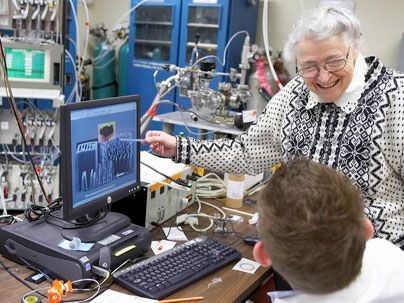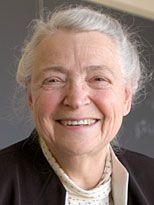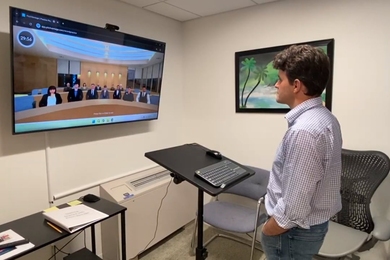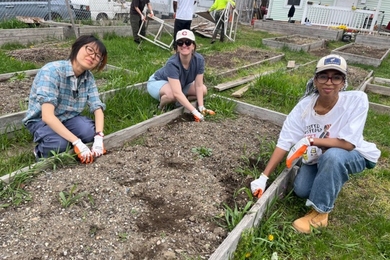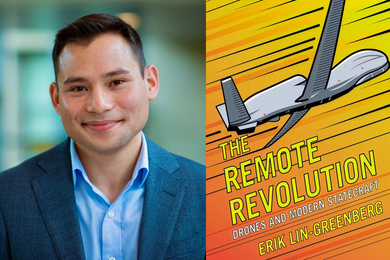MIT Institute Professor Mildred Dresselhaus is the North American winner of a 2007 L'Oreal-UNESCO Award for Women in Science.
She and four other recipients, each representing a different continent, were named at a ceremony today at UNESCO House in Paris where Sir Lindsay Owen-Jones, chairman of L'Oreal, and Koa-chiro Matsuura, director-general of UNESCO, presented each laureate with her $100,000 award.
Dresselhaus was selected for "conceptualizing the creation of carbon nanotubes," according to L'Oreal and UNESCO (United Nations Educational, Scientific and Cultural Organization). Due to their small size, high strength and electrical conductivity, carbon nanotubes are ideal for new materials used in objects such as lightweight bicycles and flat-panel screens.
A native of Bronx, N.Y., Dresselhaus has conducted scientific research for more than four decades. An MIT professor of physics and electrical engineering, she received her Ph.D. from the University of Chicago. She began her MIT career at the Lincoln Laboratory studying superconductivity; she later switched to magneto-optics, carrying out a series of experiments that led to a fundamental understanding of the electronic structure of semi-metals, especially graphite.
Dresselhaus was the first tenured woman professor at MIT's School of Engineering and one of the first women ever to receive a Fulbright Fellowship. She has received numerous awards, including the U.S. National Medal of Science and 19 honorary doctorates worldwide.
Along with Dresselhaus, the L'Oreal-UNESCO laureates include:
- Laureate for Latin America: Ligia Gargallo, professor of physical chemistry, Pontifical Catholic University of Chile, Santiago, Chile.
- Laureate for Africa: Ameenah Gurib-Fakim, professor of organic chemistry and pro-vice-chancellor, University of Mauritius, Mauritius.
- Laureate for Europe: Tatiana Birshtein, professor, Institute of Macromolecular Compounds, Russian Academy of Sciences, St. Petersburg, Russia.
- Laureate for Asia/Pacific: Margaret Brimble, professor, chair of organic and medicinal chemistry, University of Auckland, New Zealand.
Now in its ninth year, the L'Oreal-UNESCO Award for Women in Science is the only one of its kind to honor eminent women scientists at the international level. The five laureates are nominated by respected scientists from around the world and a jury of 14 distinguished international scientists selects the final recipients. This year's jury is presided over by Nobel Laureates Christian de Duve of the Institute of Cellular Pathology in Belgium and Pierre-Gilles de Gennes of the Collage de France in Paris.
The Women in Science award is designed to recognize, reward and advance the role of women in scientific research as well as provide the next generation of women scientists with inspirational role models. Since its inception in 1998, 362 women from 76 countries have been recognized as L'Oreal-UNESCO laureates or fellows.
The L'Oreal-UNESCO award for Women in Science is one part of a three-part program to recognize and advance women in science. The full program includes:
- The L'Oreal-UNESCO Awards: prestigious annual distinctions, awarded to five leading women researchers (one per continent), that identify exceptional women as role models for the generations to come.
- The UNESCO-L'Oreal international fellowships: granted annually since 2000 to 15 promising young women scientists, permitting them to enhance their expertise in renowned institutions around the world.
- The L'Oreal national fellowships, with the support of the UNESCO National Commissions, are granted annually to young women on the edge of scientific advances, to carry out independent research projects.
The Women in Science program also offers an online community, Agora, for scientists to discuss issues and commonalities and to debate the challenges women must overcome to gain recognition in their fields. Agora not only connects researchers from around the world, but it also provides opportunities to communicate with some of the top scientists in the world, including Nobel laureates.
A version of this article appeared in MIT Tech Talk on February 28, 2007 (download PDF).
